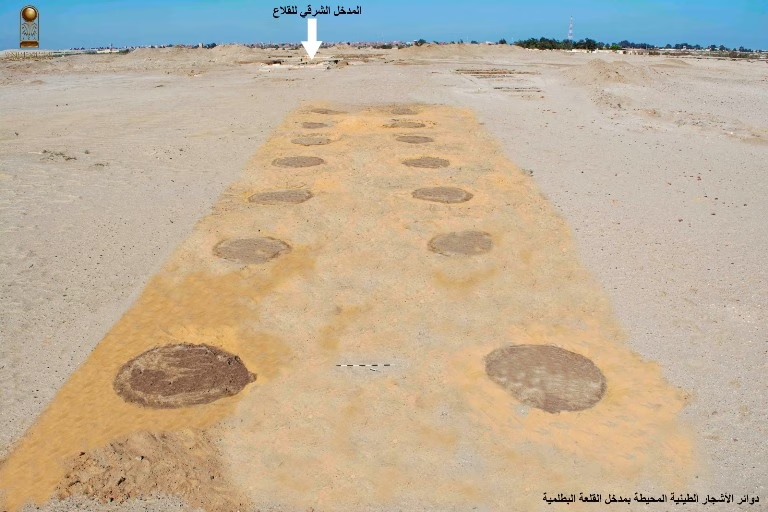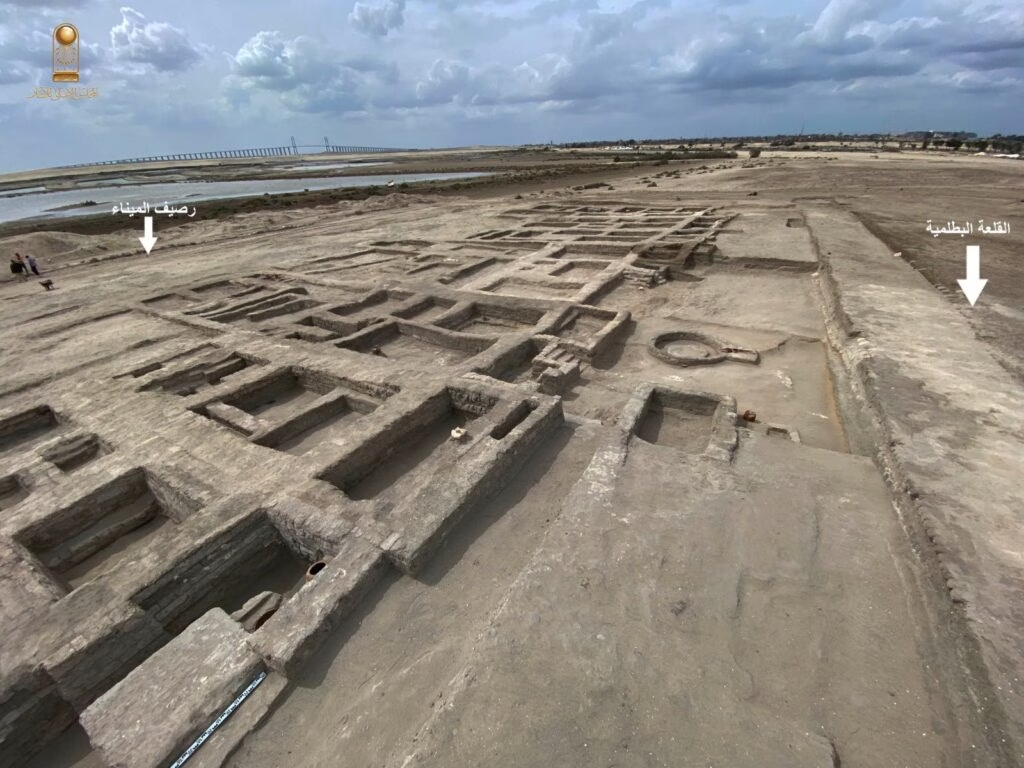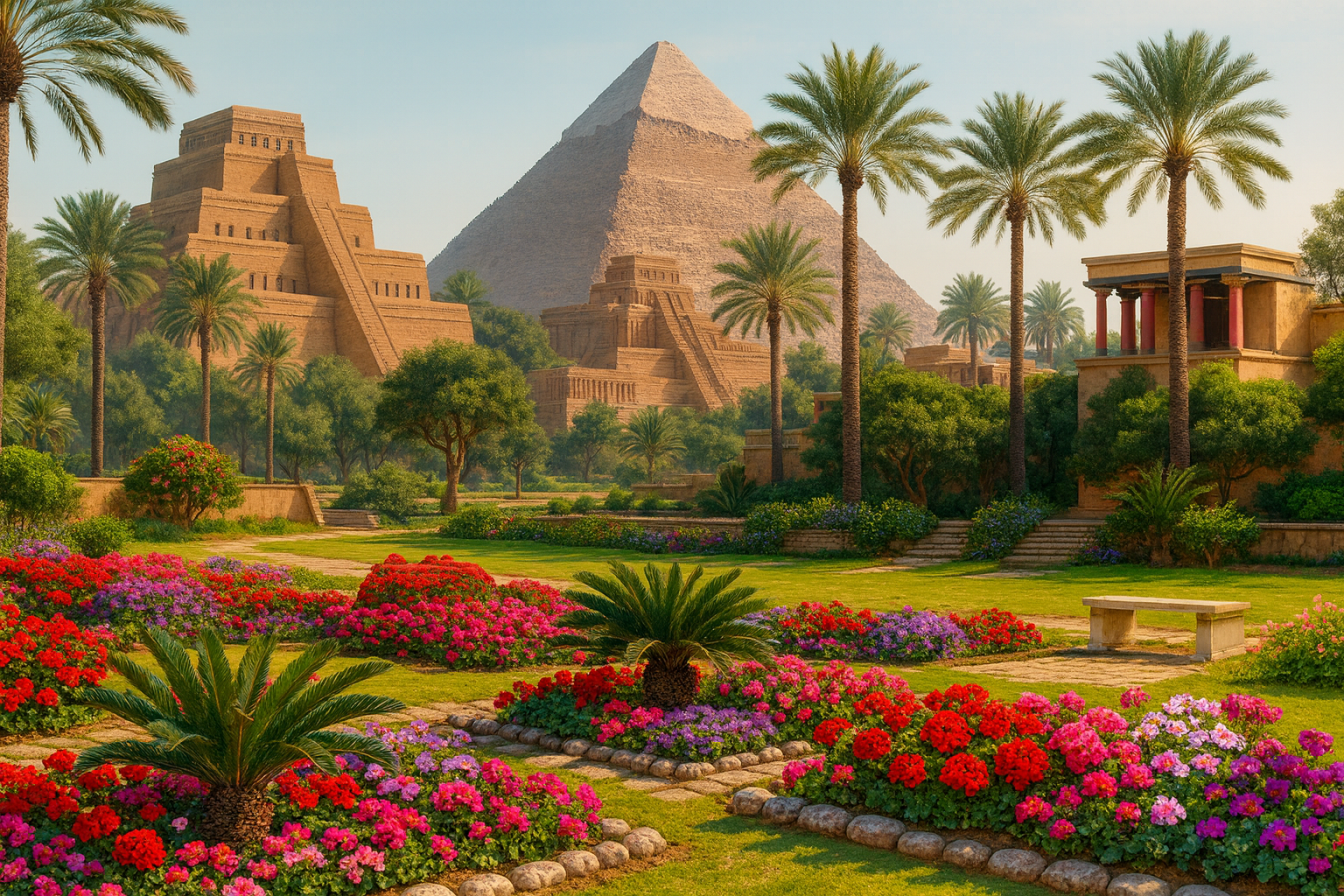New excavations at Tell Abu Saifi in Egypt’s North Sinai continue to uncover the layered legacy of one of ancient Egypt’s most strategically vital military and industrial hubs. What was once just a fortified border outpost has emerged as a complex, evolving center of defense, infrastructure, and resource management spanning centuries.
Roman-Era Barracks: A Glimpse into Frontier Life
Recent digs have revealed remarkably preserved Roman military housing units, offering rare insights into the daily routines and lives of soldiers stationed at Egypt’s eastern edge. Believed to date to the reigns of Emperors Diocletian and Maximian, these structures suggest that Tell Abu Saifi was more than a fortress — it functioned as a long-term residential garrison, blending security with community.
The remains of over 500 clay planting circles indicate a tree-lined entrance to the Ptolemaic fortress. Credit: Egypt’s Ministry of Tourism and Antiquities
A Fortress Built on Fortresses
Excavation teams have identified a previously undocumented third layer of fortification beneath the well-known Ptolemaic and Roman structures. According to excavation director Hisham Hussein, all four corners of this earlier fortress have been located. Preliminary studies indicate it predates both the Roman and Ptolemaic periods, solidifying Tell Abu Saifi’s role as a longstanding keystone in Egypt’s eastern defense system.
Military Landscaping: A Rare Insight into Fort Planning
Among the most visually striking finds is a 100-meter-long limestone-paved road, once connecting the Roman fort's eastern gate to its inner compounds. Beneath it lies an older Ptolemaic road, demonstrating a continuity of urban and military planning. Along the route, archaeologists uncovered more than 500 clay planting circles, likely used to cultivate trees that flanked the entrance — a rare example of military landscaping designed for both function and aesthetics.
Well-preserved Roman-era soldiers’ quarters unearthed at the site. Credit: Egypt’s Ministry of Tourism and Antiquities
Industrial Powerhouse: Evidence of Roman-Era Lime Kilns
Tell Abu Saifi wasn’t just a military outpost — it was also a busy industrial center. Excavators discovered four massive lime kilns, suggesting large-scale production of building materials. These may have also been used to dismantle and repurpose older structures, underscoring the site's sophisticated resource management and adaptive reuse of materials throughout its operational history.
Defense in Depth: The Ptolemaic Trench System
At the gate of the Ptolemaic fortress, archaeologists unearthed a defensive trench over two meters deep, illustrating the complex layered defenses designed to repel invasions. Architectural features at the entrance highlight the Ptolemaic dynasty’s advanced military engineering, tailored to safeguard Egypt’s vulnerable northeastern frontier.
Strategic Heart of Egypt’s Border Defense
Minister of Tourism and Antiquities Sherif Fathy emphasized that Tell Abu Saifi served dual roles across time — as a military bastion and an industrial hub. The latest discoveries, he said, offer unprecedented insight into the infrastructure and tactics used to defend Egypt's borders, while also highlighting the economic and logistical complexity of ancient military operations.
Tell Abu Saifi and Ancient Tharu: The First Line of Defense
Located near the ancient frontier city of Tharu, Tell Abu Saifi was long a cornerstone in Egypt’s border strategy. As excavations continue, archaeologists are unraveling its transformation from a strategic outpost into a dynamic nexus of military, industrial, and social activity. The site is now recognized not only as a key element in ancient Egypt’s security network but also as a living testament to its ingenuity in managing frontier life.
From hidden fortresses to lime kilns and tree-lined military roads, Tell Abu Saifi is redefining what we know about Egypt’s ancient defense systems. It is, quite literally, history layered in stone — and the story is far from over.









